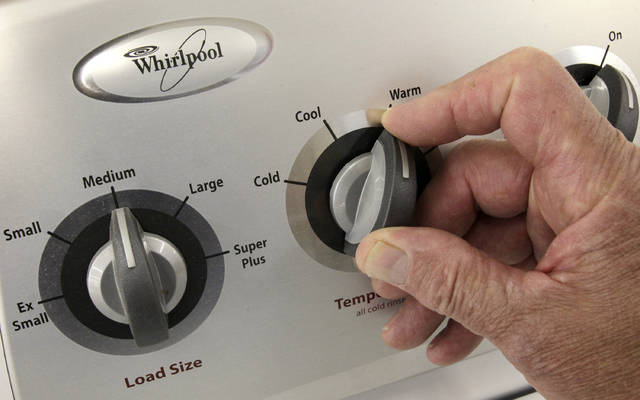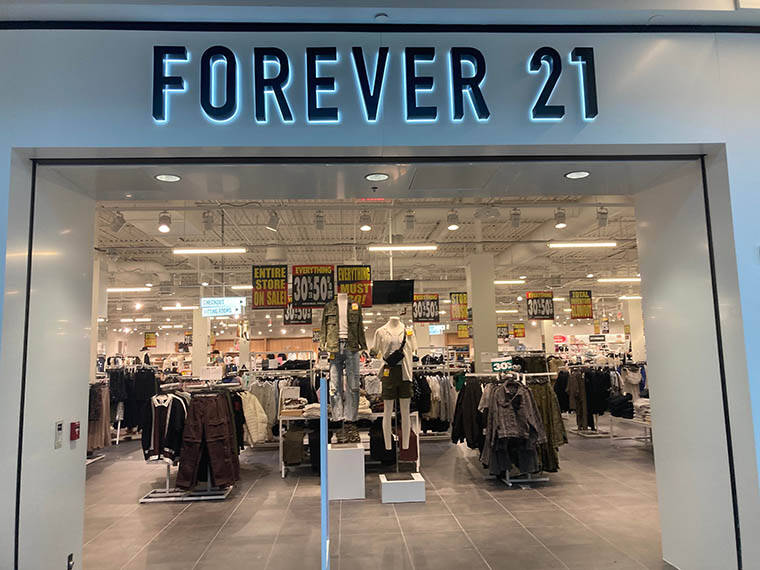Sears’ bankruptcy will have ripple effect, not all of it bad

ASSOCIATED PRESS FILE
There will be plenty of vendors who will feel pain because of the Sears bankruptcy. Several big name suppliers, including Frigidaire, Samsung and Whirlpool, were among the top 20 unsecured creditors and were owed between $23 million and $5 million, according to court documents.
NEW YORK >> Sears’ Chapter 11 bankruptcy filing will have ripple effects on everything from landlords to suppliers to workers.
Many vendors, which had already enforced stricter payment terms on Sears, are refusing to ship merchandise to stores. The company will further shrink its workforce, which has already been reduced to 68,000 as of the bankruptcy filing from 90,000 earlier this year.
But there are some positives. For mall landlords, a Sears departure could be welcome relief and an opportunity to attract new tenants that could bring in more revenue and customers.
The company’s restructuring plan calls for 142 store closures by year’s end, reducing the company to a little over 500 stores — a dramatic drop from its peak of 4,000 stores in 2012.
Here’s a look at the bankruptcy’s impact:
WHAT HAPPENS TO THE SUPPLIERS?
Don't miss out on what's happening!
Stay in touch with breaking news, as it happens, conveniently in your email inbox. It's FREE!
Suppliers won’t get hit as hard as when Toys R Us filed Chapter 11 bankruptcy and then liquidated a few months later, experts say. That’s because many suppliers, nervous about Sears not paying their bills, have increasingly tightened their payment terms to protect themselves, according to Michael Cipriani, executive vice president of Rosenthal & Rosenthal, a company that makes cash advances to suppliers based on the goods they sell to merchants. Even his firm has stopped offering insurance to suppliers who want to sell to Sears.
Brett Rose, CEO of United National Consumer Suppliers, a wholesale distributor of overstocked goods, had been selling to Sears for several years. But last year it required Sears to pay upfront before shipping to the retailer. Since June, the company, which sells to off-priced retailers like T.J. Maxx, hasn’t shipped to the retailer.
“It’s sad,” Rose said. “We hoped we would be part of their solution.”
Sears said in Monday’s court filing that about 200 suppliers have stopped or refused to ship merchandise to the company in the past two weeks, further crippling its business.
Still, there will be plenty of vendors who will feel pain because of the Sears bankruptcy. Several big name suppliers, including Frigidaire, Samsung and Whirlpool, were among the top 20 unsecured creditors and were owed between $23 million and $5 million, according to court documents.
WHAT HAPPENS TO THE REAL ESTATE?
Mall landlords overall are seeing the Sears bankruptcy as a positive, industry experts say.
To be sure, there are plenty of struggling malls that will have a hard time finding a tenant to fill the void. It often takes 18 months to 36 months to replace a typical department store, says CBRE, a commercial real estate service.
But many mall landlords are feeling optimistic. For years, they’ve been grappling with Sears’ poor-performing stores at their shopping centers, making it more challenging for them to lease space to tenants near those stores.
Many of the malls Sears occupies are in healthy shopping destinations. According to Co-Star Group, a leading commercial real estate research firm, Sears is in 76 percent of the top two tier malls that it tracks, or malls that generate at least $350 per square feet. The remainder is in the bottom third tier.
“A Sears leaving is an opportunity to bring in a more modern tenant,” said Drew Myers, a consultant at Co-Star.
Mall owner CBL carved up what used to be an old Sears at the CoolSprings Galleria near Nashville, Tennessee and brought in such retailers as H&M and American Girl. Combined, those new stores generated four to five times the revenue of Sears, according to CBL CEO Stephen Lebovitz. He noted that the redevelopment lifted sales of the overall mall by 18 percent.
WHAT ABOUT THE WORKERS?
The Chapter 11 filing will further shrink Sears’ workforce, which has already been reduced to 68,000 as of the filing Monday, from 90,000 as of early this year. At its height, Sears had 350,000 employees.
Sears didn’t respond to emails about how many workers will lose their jobs with the latest store closures. But even employees like John Germann, whose store in Chicago Ridge, Illinois, has been spared for now, is feeling uncertain about his future.
Germann, who loads merchandise from trucks, said conditions got so bad that he connected with the local chapter of the United Food & Commercial Workers International Union, which unionized the team at his store three years ago.
“We didn’t have anyone else to turn to,” he said.
Sears said it intends to pay workers’ wages and benefits without interruption. It held a meeting for employees at its corporate headquarters and other corporate locations on Tuesday
John Challenger, CEO of Chicago-based outplacement firm Challenger, Gray & Christmas sees some hope.
“It’s a good economy,” said Challenger “So, they’re coming in the market at a better time.”




